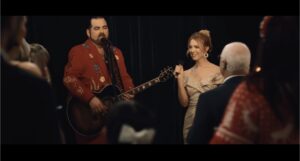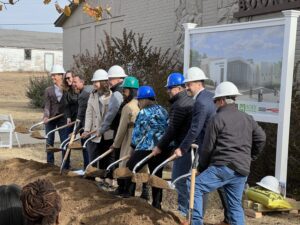In history one can find a half dozen derivatives for the name Sapulpa. It’s the name given our town for the Creek Indian who operated a trading post here before we were a town. But do you know how we got our school mascot name? Stay tuned for “the rest of the story.”
Lawrence and Claude Masters were the best of friends. They went to Sapulpa High School together, and the University of Oklahoma. They were every bit Sooner Football fans. With them, when they traveled to Norman were their two boys, Bill Masters and David “Skip” Lawrence.
Skip was always fascinated with how much recall Masters had about sports and even in later years could recite the scores, years, and quarterbacks of OU’s big games.
The Masters were nearly family to Skip. He worked with Claude’s wife, Ursula, at the Lawrence family drug store. After she had passed and after Skip’s dad was gone, the younger Lawrence maintained a closeness to Claude—even attending Sapulpa Chieftain games.
One day in a conversation about statistics and sports history, the subject of how Sapulpa arrived at naming their teams Chieftains came up.
Claude explained to Lawrence that at the turn of the century in Sapulpa’s infancy, the ball teams simply became known as Jones’. What? Yeah, named after their coach, Coach Jones.
Apparently when Coach Jones moved on, the teams settled on being called the Sappers (from around 1910 to 1923) Lawrence recalls Claude telling him. But apparently the Sapulpa Sappers were kicked out of the conference because of recruiting violations. When Sapulpa came back into the conference their teams took the name “Outlaws” — perhaps a play on the frontier town’s early Indian Territory history in which real outlaws had a safe haven from white man’s law for a time.
At any rate, in 1928 there was a move to adopt a more acceptable name. It would be interesting (and we’re hoping for lots of comments) what some of the considerations were. Settling on a name, according to what Lawrence was told by Masters, was decided in a contest between members of the Class of 1928 graduating seniors.
The winner — Sapulpa High School senior Pauline “Polly” Page.
The name “Chieftain” which denotes leadership seems to be endearing to the Community’s native American Heritage. The town was named for Chief Sapulpa, the Creek Indian and frontiersman who ranched in the area and operated a trading post here. He was not an Indian chief (the title was often given to Indians, sometimes in derision by white men) but Chief Sapulpa was respected as a leader. His trading post, became Sapulpa Station when the railroad extended from Red Fork (West Tulsa). It is fair to say, use of “Chieftain” for the mascot has been questioned at times by tribal members and at least one Creek principal chief, but most feel it is a neat way to honor Indian heritage. In fact, in recent times a common use of the Chieftain brand is attached to make it “Chieftain Pride” and Chieftain Strong.”
So there you have it, “the rest of the story”[1] as told by Claude Masters and David “Skip” Lawrence. But there’s one more piece. Mascot-naming contest winner Polly Page was born in Sapulpa in 1910 to pioneers Leonard and Minnie Cue Page. She married Kermit Carter in 1933 and Polly Carter became a key figure in the community’s health care history.
—
1 “The Rest of the Story” was a Monday-through-Friday radio program hosted by news commentator Paul Harvey. Beginning as a part of his newscasts during the Second World War and then premiering as its own series on the ABC Radio Networks in 1976, The Rest of the Story consisted of stories presented as little-known or forgotten facts on a variety of subjects with some key element of the story (usually the name of some well-known person) held back until the end. The broadcasts always concluded with a variation on the tag line “And now you know the rest of the story.”
—
This story is republished with permission from Sapulpa News and Views Facebook Page.










